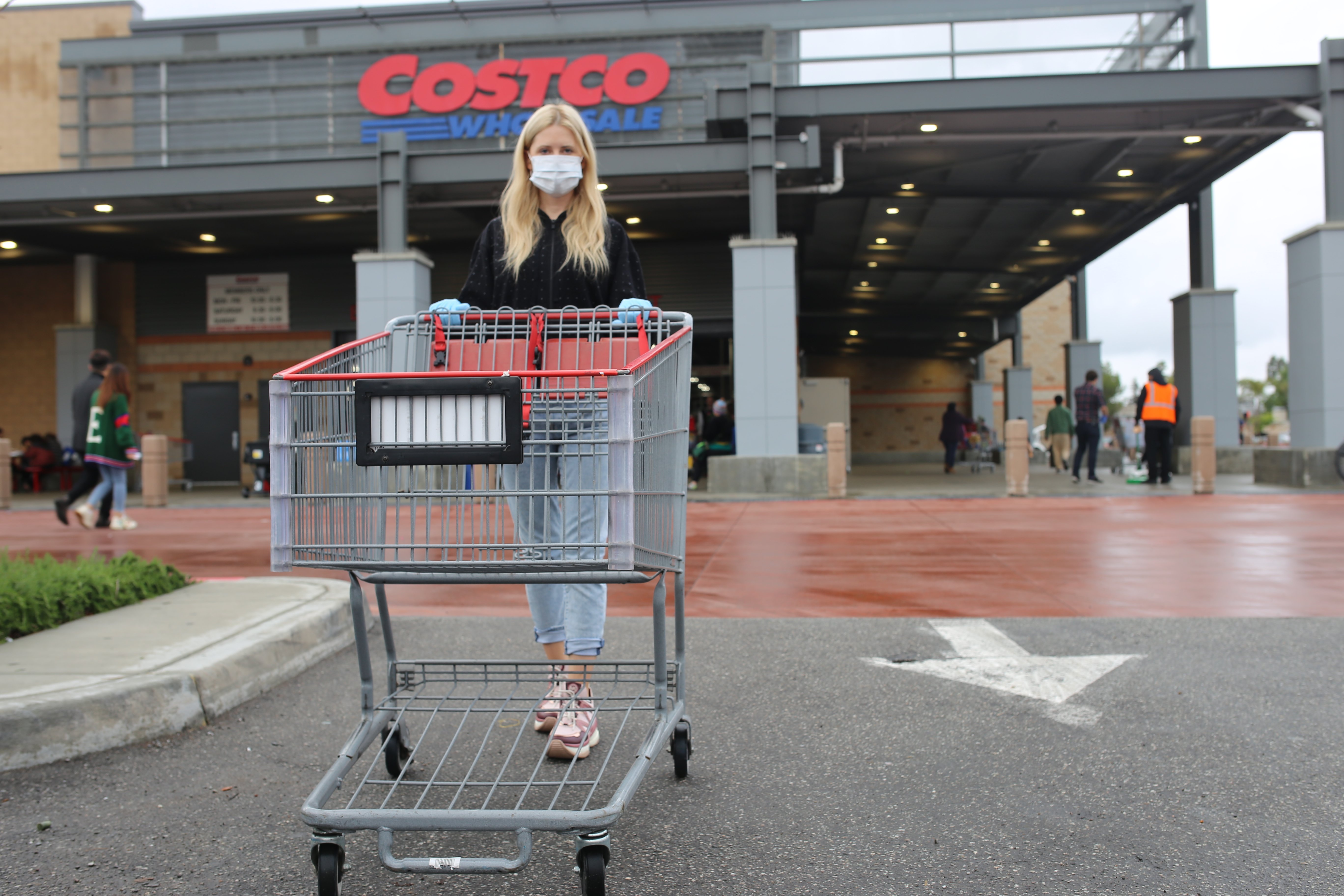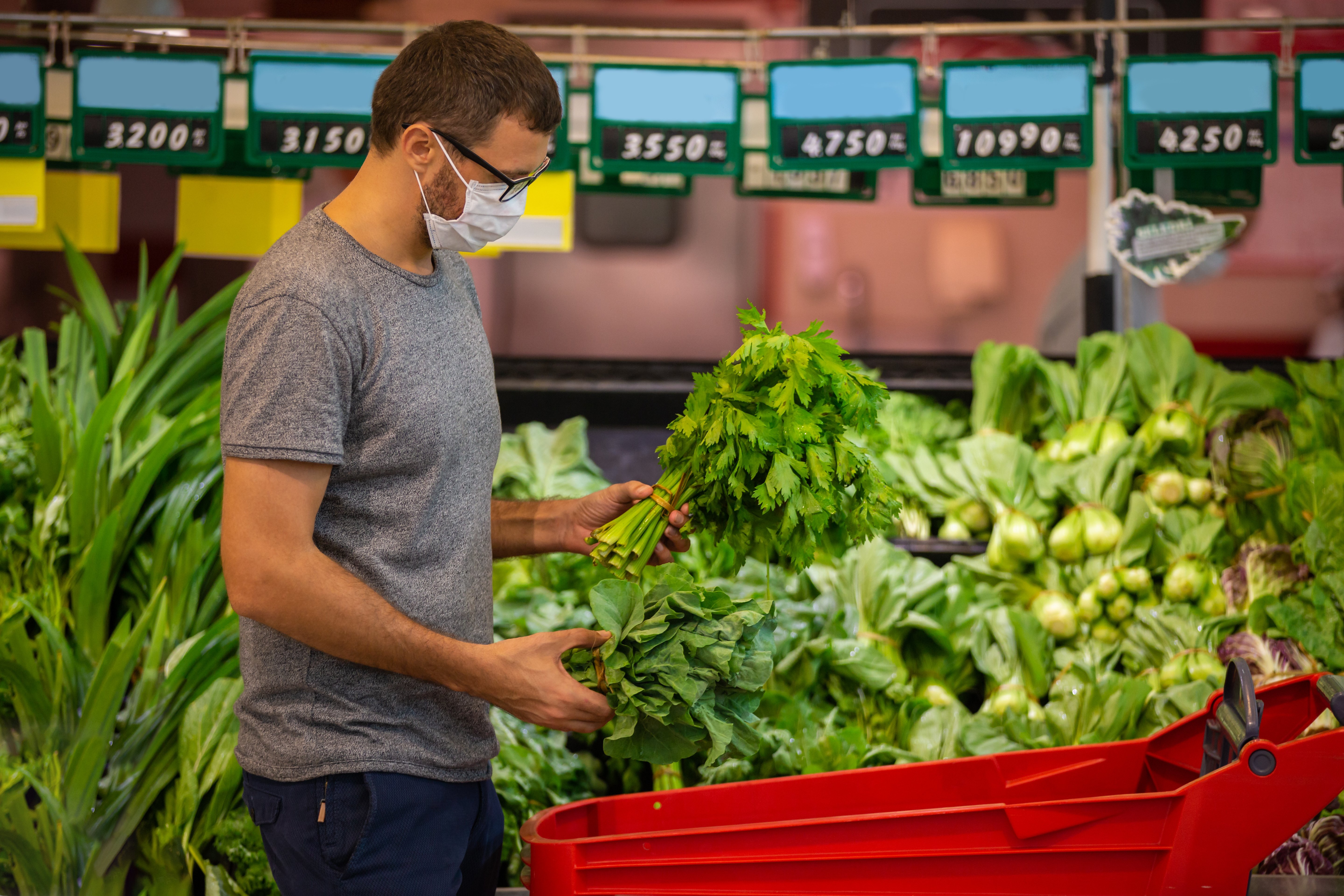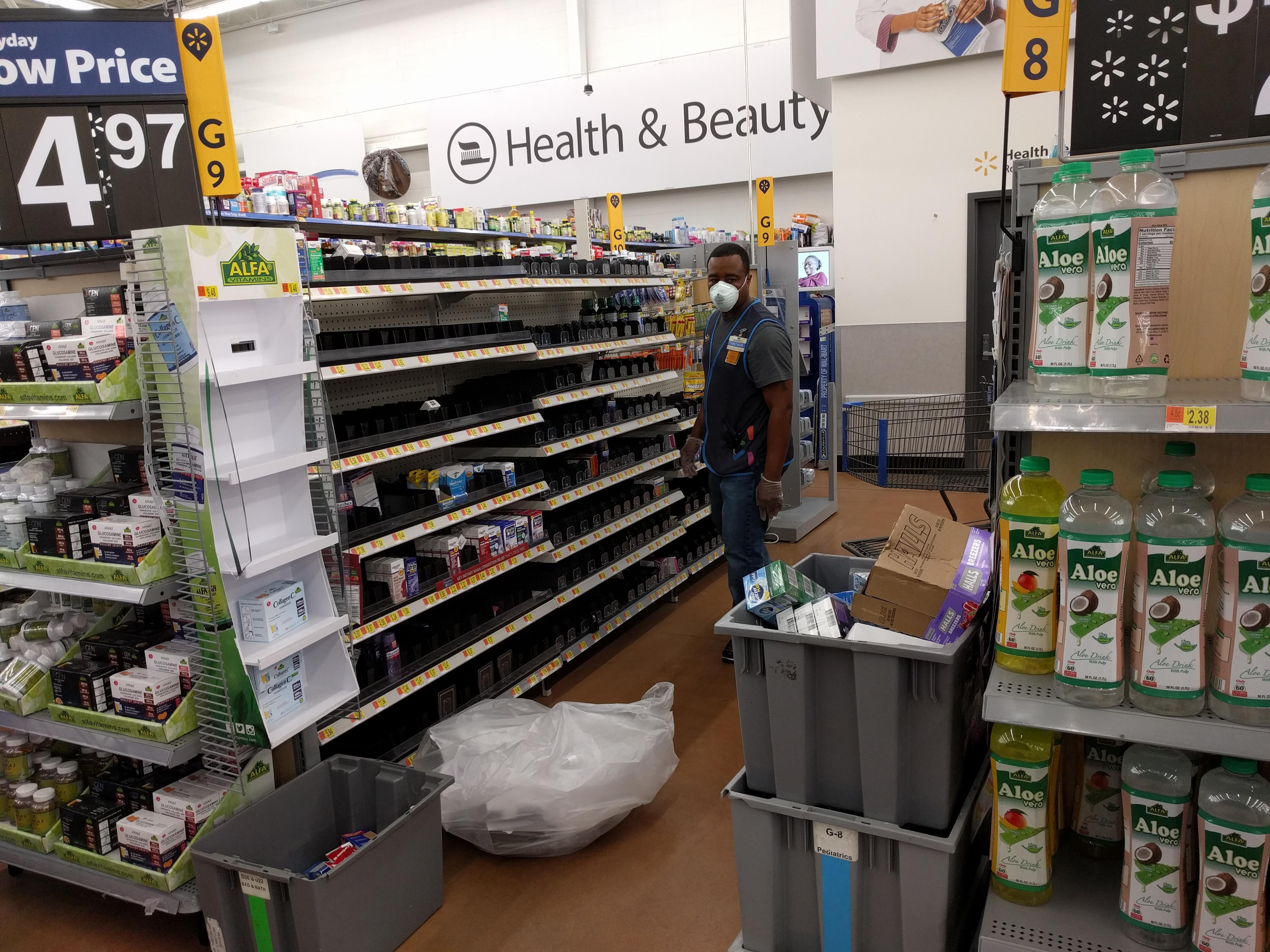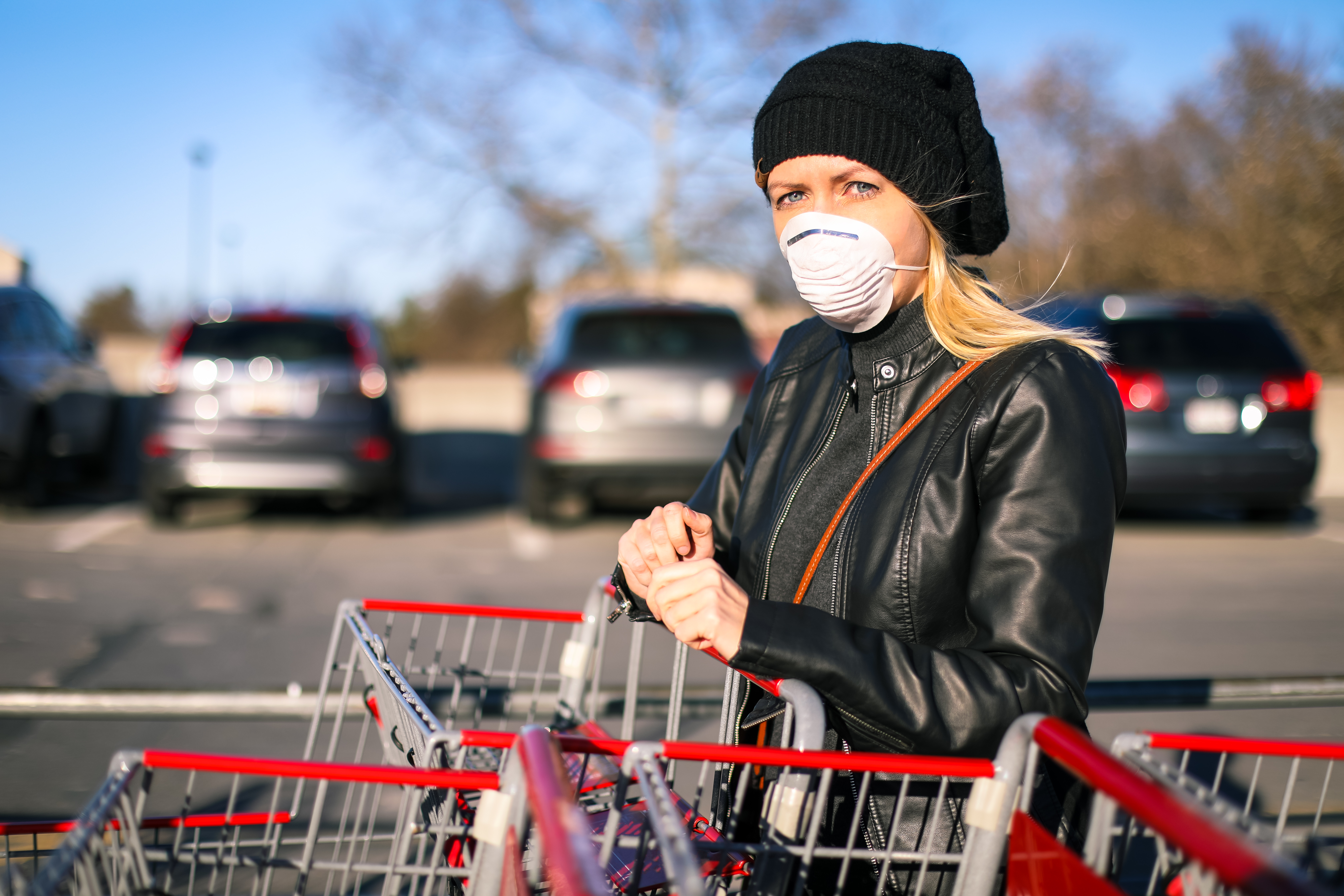Grocery stores have a central role to play in our battle against coronavirus, but as they necessarily remain open, they invite concerns about their safety among customers and employers alike. It’s simple: Stores have to stay open to keep us fed, crowded indoor spaces are increasingly risky, and customers and employees alike are frightened. It’s tough out there, there's no other way to put it.
Our grocery clients have been asking us what they can do to enhance safety procedures, as well as communicate those efforts. So, we’ve been putting in the grocery industry market research. Here we discuss current measures being implemented in stores across the country as well as outlining the most reliable information we have about how to inactivate the virus and minimize risk. We will also consider the unique challenges stores face when protecting employees and customers' physical and mental well-being.
Grocery Best Efforts to Combat COVID-19
We’ve been keeping track of the COVID-19 safety measures we’ve seen implemented into grocery stores since the beginning of the month and, while some are obvious, others are unexpected. Among the novel precautions we have seen grocery stores take to address the threat posed by the novel coronavirus:
- Offering hand sanitizer and disinfectant wipes near high-touch surfaces like shopping carts and debit card keypad
- Plexiglass sneeze guards installed in checkout lanes to provide a barrier between customers and employees
- Limiting store capacity by asking customers to wait six feet apart outside the store, following a ‘one out, one in’ policy to allow for proper distancing inside the store
- Distributing free gloves for customers and employees (though there are questions about the wisdom and efficacy of this practice)
- Offering exclusive store hours for seniors and other at-risk populations
- Asking customers to bag their own groceries if they bring reusable bags
- Asking employees to alert a manager if they see customer with unsafe behaviors such as not observing proper distancing. The manager then asks the customer to wait outside and shops for them
These efforts are, in addition to enhanced daily sanitation procedures, often described as deep cleaning. As we pointed out yesterday, though the term “deep cleaning” gets thrown around all the time, there is no actual standard or definition for the term when it comes to battling COVID-19. Yet there are well-established cleaning and disinfecting procedures agreed upon by health and safety authorities.
Clean and Disinfect: Sanitation Best Practices to Battle Coronavirus

First, there is, obviously, a distinction between cleaning and disinfecting. Cleaning removes the virus from surfaces like your hands and countertops but it does not necessarily kill or inactivate it like approved disinfectant products (generally bleach-, alcohol-, or hydrogen peroxide-based). There is some reason, however, to believe that soap may also inactivate the virus (quick science-ish explanation--soap breaks down grease like the fatty envelopes that encase all coronaviruses), but this has yet to be established to a scientific certainty.
While there remains some collective confusion about established best practices in terms of cleaning products, frequency, and efficacy, various government agencies have provided helpful guides for business leaders and consumers alike.
The EPA, for example, published a guide to products to use against the coronavirus, while the CDC offers a how-to guide for cleaning and disinfecting the household, and OSHA for keeping safe on the job. If you haven’t looked at these guides yet, please stop reading this blog, click through the links, and inform yourself as much as possible. Actually, on second thought, pause reading this blog, go checkout the information, and come back and finish reading. I promise we will still be here...
...back? Ok! So, while this is clearly a case of ‘better safe than sorry,’ it is also important to remember that the CDC has yet to document a single case of coronavirus spreading from surface contamination. This does not mean it is not possible, of course, but it is a healthy reminder that person-to-person transmission (being within six feet of a sick individual) remains the dominant method of infection.
Furthermore, it is extremely unlikely that the virus will pass via contaminated food--the virus does not last nearly as long on organic surfaces as artificial ones, and the digestive system’s stomach acid would likely deteriorate the virus before it could pass into the respiratory system.
Yet this does not mean grocers should not actively work to keep surfaces and food as clean and virus-free as possible. Again, these measures are as much for customers’ physical health as they are for their mental well-being--consumers don’t just need grocery stores to be as safe as possible, they need them to feel as safe as possible as well. This is not merely semantics or a tactic to maintain consumer trust and loyalty (which is, of course, important!), but rather has a vital role to play in our collective mental well-being as we find more and more to worry about. Keeping people feeling safe as they procure vital staples is paramount to our continued sanity and viability.
Grocery Customers Are Worried About COVID-19

Consumers are rightly concerned about any public venture in this pandemic; one shopper, when asked if he felt safer with the store’s improved safety measures, responded, “It’s really hard for me to evaluate that because I don’t know what’s safe and what’s not. People are wearing masks and gloves, but then I go to pick apples and how many people have touched them?” This shopper’s confusion and concern characterizes much of the public at this moment.
Indeed, though it can be safely assumed, a quick Google Trend search confirms just how concerned about grocery safety the public has become over the last month. For its part, the media is doing its best to keep people informed about the level of risk and best in-store practices, directly answering customers' most troubling questions (namely, can you get coronavirus at the grocery store?).
In addition to providing important information, the media is also regularly praising stores for their in-store safety measures. Check out this feature that ran on CBS Evening News last week, offering consumers a behind-the-scenes look at grocery stores’ frontline tactics. Your humble blogger does a lot of industry reading and I have yet to find a single story about grocery store safety that made the stores sound like anything other than heroes. There’s no “gotcha” journalism, no exposé or hidden camera recordings of stores falling short--the coverage has been supportive and informative.
Of course, we can’t expect this to last forever--as we ride through the first wave of the pandemic, we are all in shock, looking for comfort and support. Sadly, this is probably as good as it’s going to get. Grocery and the media’s honeymoon has lasted longer than most, and will likely continue for some time, but it will ultimately end. And when it does, stores do not want to be on the wrong side of some newfangled Fight Back! with David Horrowitz.
Grocery Employees Are Concerned About COVID-19
Grocers must also consider the physical and mental well-being of their employees, but even when grocers do everything they can on this front, it is still oftentimes not enough. Two quotes from grocery workers over the last week offer a concise and somewhat heartbreaking picture of what they are facing every day on the front line.
One Atlanta Whole Foods worker reported hearing a customer say into his phone (about coronavirus), “I’m pretty sure I have it; I’m going to the doctor now. I just have to stop at Whole Foods first.”
Gross, right?

A Santa Rosa, CA grocery worker, when asked if she felt comfortable or safe at work right now offered this incredibly nuanced response, which is well worth quoting at length: “I don’t think comfortable or safe is the right word because we still have (customers) here ignoring (social distancing guidelines), or not following that closely. We already have so many protocols that we have to follow and we get stressed, we get anxious and people have mental breakdowns. Am I physically safe? Probably. Mentally safe? Not really.”
While many grocers have been vocal about prioritizing employee safety, and are likely doing their best in truly trying times, we would be remiss if we did not point out there is already developing contention between at least one grocer and its employees.This week saw some Whole Foods workers refusing to come to work until the company meets their demands regarding safety and compensation. We are not going to insert ourselves into this unique labor dispute, but it is worth noting that workers are more valuable than ever in this crisis and we (consumers) should be treating them as such.
So, let’s take a moment right here and now, and let it be our final word for the day, to offer our gratitude and empathy for grocery workers. They put their mental and physical well-being in danger every day for us yet do not get the same appreciation as health care workers and other essential employees during this crisis.
Can you imagine the emotional trauma of always feeling at risk despite your employer’s best efforts? To never feel like you can let your guard down or feel at ease in your place of work? Thankfully, most of us do not have to. They are truly unsung heroes and we should all be doing whatever we can to minimize their risk and appreciate their effort. Keep them in your prayers, and if you don't pray, keep them in your thoughts and in your heart.


